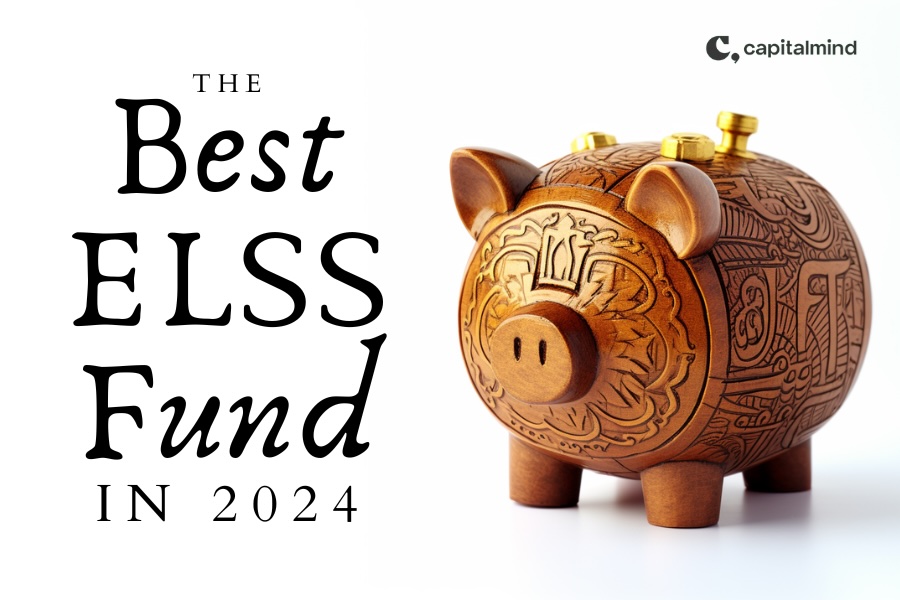Nippon India Mutual Fund has launched an NFO (New Fund Offering) for Asset Allocator FoF, a new Fund of Funds that will invest in a combination of equity, debt, and gold funds. The NFO is open from 18th Jan to 1st Feb 2021. We took a look to see if it makes sense for investors.
Short Answer: A rules-based asset allocation approach as this fund describes can be a powerful method to manage long-term returns. However the lack of information on backtest results, and the fact that Nippon India launched another similar fund less than 6 months ago make this fund’s purpose puzzling. We wouldn’t jump in yet.
Read on for our take on the Nippon India Asset Allocator FoF NFO.
Is there a reason to consider Multi Asset Funds?
A portfolio of assets that don’t all move together does well over the longterm by limiting the impact of deep drawdowns.
It is the foundation of a long-term investment plan. We summarise it in the chart below.

Source: Capitalmind Post – How to think about Asset Allocation in India
Most investors are expected to determine their own asset allocation and allocate to specialised assets for each. Your decisions can falter at two levels, the choice of asset and the allocation to it. What if you don’t have the inclination to make those decisions?
Theoretically, a good Multi-Asset fund would do this for you.
In practice, most Multi-Asset funds in India are what we call “Equity and a bit” funds with the bulk of allocation in equities combined with a token amount to others like debt and gold. Is the new Multi Asset fund from Nippon India any different?
Nippon India Asset Allocator FoF in a nutshell
“The primary investment objective of the Scheme is to seek long term capital growth by investing in units of equity oriented schemes, debt oriented schemes and gold ETF of Nippon India Mutual Fund.”
From the Scheme Information Document
It will invest a maximum of 100% in equity and debt, and up to 25% in their Gold ETF depending on their proprietary model that will take macro and market factors into account to arrive at a target allocation to each asset class.
“The Scheme will follow an in-house proprietary model to determine the optimum allocation in equity, debt and gold. The rebalancing will be done on a monthly basis.
The model consists of following broad parameters:
- Trend Following (Moving Averages, etc.)
- Valuations
- Yield Curve
- Macro Fundamentals
- Relative Asset Class Momentum”
It will benchmark against the CRISIL Hybrid 50 + 50 – Moderate Index
What we like
Bringing the conversation back to Asset Allocation
Bull Markets are fertile grounds for self-appointed stock market geniuses. Scroll twitter on any up day and you see folks humbly and not-so-humbly bragging about xyz stock up 80% from when they added it all the way back in April 2020.
Who wants to hear about asset allocation when going all into stocks seems so lucrative?
That this fund even focuses on this core of investment management is a positive.
From a previous NFO review post we wrote last year
We have been banging on the asset allocation drum for a while now. We believe it serves two purposes:
- Better for mental health: We (human beings) are not wired to handle sharp drawdowns. Even if we know in our brains that in spite of the volatility, equities will deliver superior returns over the long term, the sight of a portfolio deep in the red will make people do funny things. Like sell everything and move to cash to get the discomfort over with and swear off equities. Our analysis shows even a combination of NIFTY with FDs would have offered similar return for far lesser volatility.
“In uncertain times like today, the awareness that no matter how deep the correction, a part of your investments will remain unscathed and will keep growing, can make the difference between losing the plot and making the right decisions.” [Forget stocks for a bit, get your Asset Allocation right]
- Better for long-term returns: Contrary to giving up returns for safety, a properly diversified basket of assets can help outperform any single asset with much lower volatility. We tested this by combining Debt, Gold, International Equities with a Domestic Equity portfolio to see the impact on results.
“An investor’s objective should be to allocate the minimum possible to risky assets while meeting his (her) required annual return over the long-term.” [How to think about Asset Allocation in India: Part 1 & Part 2]
Rule-based Tactical Allocation
A decision-making framework that relies on how the fund manager feels that morning is fraught with uncertainty. If it did well, was it luck, or was it intuition? Rule-based frameworks are not necessarily better at absolute quality of decision-making, but they offer a tight feedback loop to gauge the validity of those rules applied over a repeated set of decisions.
The Nippon India Asset Allocator FoF product presentation mentions a number of macro and market-level indicators to arrive at its target allocation. The image below is an illustration of how it starts with a standard allocation and layers on the various indicators it will consider to arrive at the final split.

Source: Product Presentation
Note we are not commenting on the validity of the factors used because they have not shared exactly how each one is calculated and links to the outcome. But assuming they adhere to the rules, the system itself will show whether it is working or needs improvement.
What we do not like
Where are the backtest results?
Rule-based systems can be powerful because you can apply them to the past and see how they would have done. Seeing how they would have done in down and up years for the market is a good way to see if it would have helped you sleep better.
Yes, the downside is you could end up tweaking the rules to generate fantastic returns in the past, which then promptly fail in the future, but what else are you going to learn from if not from the past?
The Nippon India Asset Allocator FoF product presentation even has a page with “Model – Backtested Results” written on it, but no actual results. Maybe a marketing person decided the results are not as flattering as they could be and deleted the page. In their absence, we can only speculate why they chose to not include them.
Maybe just Equity after all
Our criticism of most Multi Asset Funds is that they are more “Equity and a bit” funds with the bulk of their allocation to equities and a token amount to other assets. To do this fund managers state wide limits for asset class exposure, and when equities have been doing well for a while, most Multi-Asset funds become equity-heavy and neglect the core concept of asset diversification to protect against corrections.
This new fund states between 0 and 100% to Equity and Debt, and between 0 and 25% to Gold. That’s too broad.
The folks at Nippon India could have clearly shown year wise allocation over the course of the backtest to show what investors can expect to see in practice. But again we can only speculate how it would have done.
Nippon India just launched another Multi-Asset Fund
The biggest reason we don’t like this fund. In Aug 2020, Nippon India launched a Multi Asset Fund. Here they are launching another in the fund of funds category.
The older fund combines domestic and international equity with debt and gold. Why this new fund then seemingly for the same purpose? The difference, apart from the fact that this new fund is a Fund of Funds and will in turn invest in other Nippon India funds, seems to be that this will not invest in international equities, has wider potential lower and upper limits of allocation to equity and debt. Also, the older Multi-Asset fund allocation would be fund manager discretion which we felt was a negative.
Given that fund has gathered ₹ 837 Crores in AUM since then, there seems to be no reason to launch another fund serving the same purpose. If there is some meaningful difference from the investors’ point of view between the two, we couldn’t find one.
Are other Multi Asset Funds better?
Table below shows summary of existing Multi-Asset funds, their AUM, 1/3/5 year performance and performance ratios.

Notice the significant dispersion in results which means fund managers decisions have an impact on the outcomes. But like we said, many of these are equity funds by a different name. A recent fund, the Motilal Oswal Multi Asset Fund looked promising when we first looked at it in July 2020 because it had non-trivial minimum allocations to non-equity assets. Of the funds with a track record, the SBI and Quant Multi Asset funds have shown most consistent performance with limited volatility.
Bottomline
A rules-based approach to increasing and decreasing exposure to assets can be a powerful method to manage long-term returns. However the lack of information on backtest results, and the fact that Nippon India launched another similar fund less than 6 months ago make this fund’s purpose puzzling.
We do not recommend investing in this fund until there is more information on how the fund’s rules work and how much it allocates to assets.




